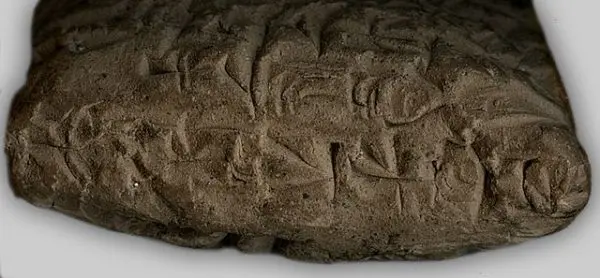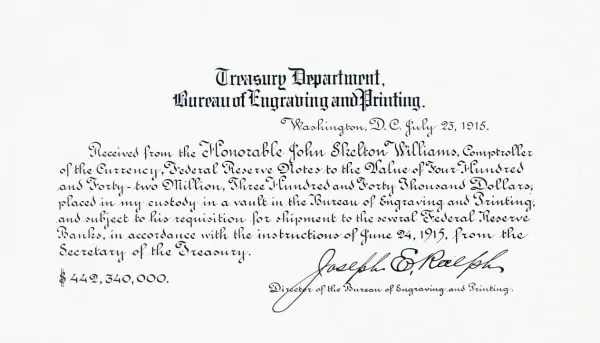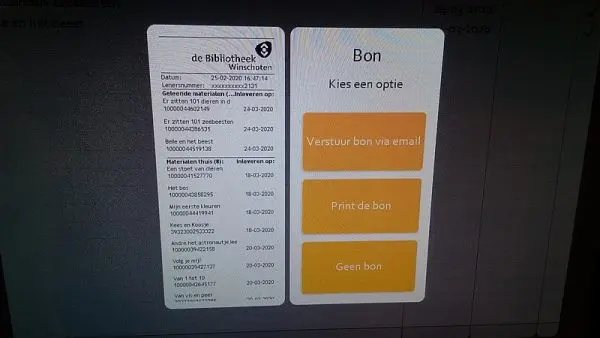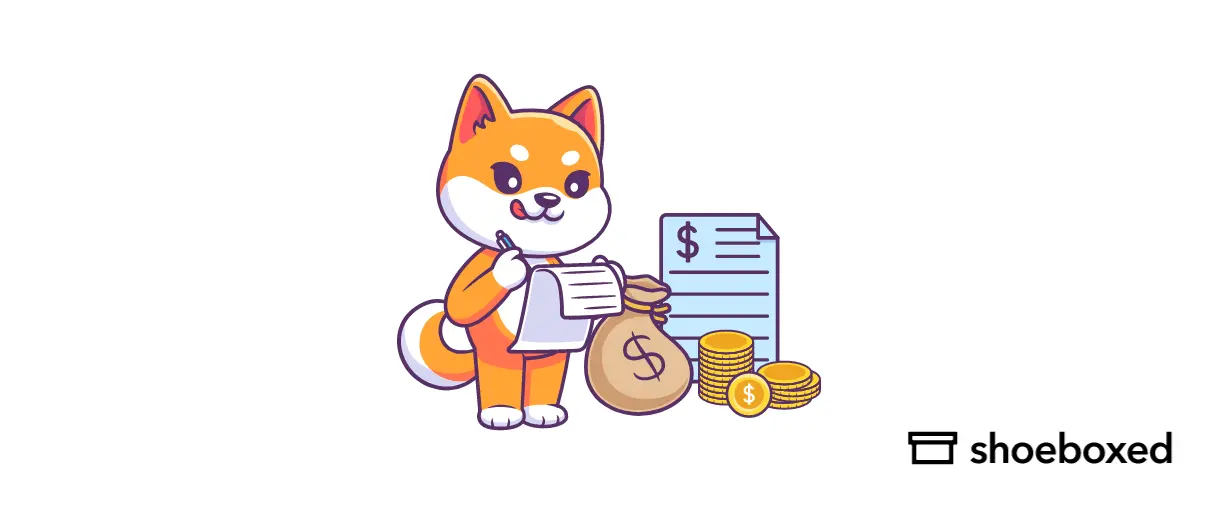According to Green America’s Skip the Slip report, receipt paper production consumes 3 million trees and 9 million gallons of water in the U.S. every year!
It’s no secret that receipts are terrible for the environment, however, in the business world, they’re unavoidable. Luckily, as eReceipts and receipt tracker apps like Shoeboxed become the standard, we are increasingly less dependent on those small slips of paper. They are easy to use and convenient, and there are multiple ways to upload your receipts. Some apps like Shoeboxed as extra features such as mileage tracking to claim mileage for taxes and can hold and track business cards.
But how did these little pieces of paper come to be? Today, we’ll be taking a deep-dive into the history of receipts. Keep reading as we look into how receipts transformed from simple cuneiform tablets to detailed digital documents.

Originating from Umma, the tablet dates from the reign of Shulgi (also known as Dungi), King of Ur, between 2029 and 1982 B.C.E. It records the receipt of rent paid in kind to the temple authorities. Wikimedia Commons.
What is a receipt?
Before we begin, let’s make sure we understand what a receipt is. Did you know the word “receipt” comes from the Latin word for receive and the Old Norman French word for recipe? Investopedia describes receipts as, “a written acknowledgment that something of value has been transferred from one party to another.”
Essentially, a receipt is your proof of payment. Notice how this definition doesn’t specify a receipt as being a slip of paper from a receipt book or an emailed document. That’s because receipts haven’t always been written on a piece of paper—or even written for that matter.
Turn receipts into data for tax time ✨
Try Shoeboxed’s systematic approach to receipt tracking for tax season. Try free for 30 days!
Get Started TodayWho invented written receipts?
The Mesopotamians developed the first written receipts over 5,000 years ago. Archaeologists have uncovered thousands of receipt tablets and some of the oldest known forms of writing ever found were receipts documenting lists of clothing and their prices.
Cuneiform, the earliest known form of writing.In Babylon, governing laws only legally recognized transactions verified with written receipts. If goods were stolen and the possessor could not produce a receipt, the original owner could reclaim the goods with a receipt for the original purchase. Receipts were a vital part of wealthy Mesopotamian society.
Then, with the invention of papyrus, wealthy Egyptians were able to make receipt-keeping more accessible and reliable. For those who couldn’t afford costly papyrus, broken pieces of pottery were used as a substitute. It was at this time that farmers and merchants began using receipts to protect themselves from exploitative tax practices.
Receipt-keeping catapulted into the mainstream with the invention of the printing press in the 1500s. Being able to produce receipts using pre-printed forms was convenient, and it wasn’t long before every purchase warranted a receipt—the standard we are accustomed to today. Banks began issuing receipts to be exchanged for gold, which were eventually used as currency. Merchants offered receipts for purchased goods. Farmers could provide receipts for produce, livestock, or other sales related products.
Receipt printing only optimized further with the invention of the modern receipt-generating cash register in the early 20th century. Although pre-printed receipts saved time, filling the blanks was less-than-ideal for those in a hurry. The National Cash Register Company (NCR) recognized the need for faster receipt printing and developed a cash register that could print receipts with the pull of a hand-crank. This significantly increased demand for printed paper receipts and NCR became the household name for receipt printers.

A receipt for $442,340,000 dated 23 July 1915. From Wikimedia Commons.
In 1969, as humans made first contact with the moon, they also cut costs for businesses nationwide with the introduction of thermal receipt paper rolls. These receipt rolls required no ink cartridges or ribbons. Instead, they relied on heat-activated chemicals and printed faster at a much lower cost. Cheap, quick printing also meant paper receipts could include more details.
Streamlining receipt-printing comes at the cost of the environment, however, because thermal paper is coated with toxic bisphenol-A (BPA) and bisphenol-S (BPS). This makes them unrecyclable and harmful for both humans and nature. This remained the standard until the early 21st century with the popularization of the Internet.
When was the first digital receipt introduced?
Technology has quickly replaced a number of analog-form media over the years. Ebooks, music streaming services, and receipt software are all examples of how we’ve digitized our everyday lives. It was only natural for the paper receipt to evolve into what we now know as an eReceipt.

Options to print out a receipt or have it sent by e-mail of the small local public library in the Groninger city of Winschoten, Oldambt. Donald Trung Quoc Don (Ch? Hán: ???) – Wikimedia Commons – © CC BY-SA 4.0 International.
The first eReceipts were used in the 1990s. The IRS began accepting electronic tax records/records and digitally scanned receipts in 1997, as long as they met the following criteria: they were easily accessible, legible, and regularly maintained. It was around this time that retailers began exploring the idea of using eReceipts, but its adoption was stalled by the dot-com crash at the end of the decade.
It wasn’t until 2005 that Apple became the first retailer to issue digital copies of their receipts. As the wastefulness of paper receipts became more apparent and society began to fall out of love with the little slips that once lined our purses and pockets, the digital receipts quickly became a regular alternative at the register. Now, most major retailers offer both options and many businesses have chosen to opt-out of the use of paper receipts altogether.
The longest receipt in the world
Did you know the longest customer receipt ever printed was generated in New York City?
In 2011, a charity group called Store Buyout heard the story of Hercules Fancy Grocery, an independent grocery store at risk of losing its lease and going out of business in the wake of rising taxes and rent prices.
In an attempt to save the store from bankruptcy, the charity bought every single item from the store—costing them over $19,000 and generating a receipt over 57.5 feet long. There were more than 3,000 items listed on the receipt, and the transaction took more than six hours to process!
Never lose a receipt again 📁
Join over 1 million businesses scanning receipts, creating expense reports, and reclaiming multiple hours every week—with Shoeboxed.✨
Get Started TodayFrequently asked questions
What is the definition of receipt?
A receipt is a written confirmation that an exchange of value has been transferred from one party to another, according to Investopedia. The word “receipt” derives from the Latin word for receive and the Old Norman French word for recipe.
Who invented receipts?
The Mesopotamians are believed to be the first civilization use a form of receipt, some 5,000 years ago. In 1929, a German archaeologist uncovered cuneiform tablets documenting lists of items and their prices found in an Uruk settlement (located in present-day Iraq).
Infographic: The history of the receipt
Check out the infographic below to learn the history of the receipt across the globe.

Infographic: The history of the receipt.
Final thoughts
Next time you go shopping, as you slide your credit card into the machine, consider the years of history behind the receipt you’re about to receive. Instead of heavy tablets or fragile papyrus, people today enjoy the luxury of receiving their proof of payment through an email sent directly to their smartphones or printed on a crisp slip of white paper.
And it doesn’t stop there. Fintech startups like Shoeboxed have been working to take receipt innovation a step further by introducing new ways to capture, store and manage your receipts. Check out this video to learn more about Shoeboxed’s free digital receipt app.
Shoeboxed, the easiest way to turn receipts into data and deductibles!
About Shoeboxed!
Shoeboxed is a receipt scanning service with receipt management software that supports multiple methods for receipt capture: send, scan, upload, forward, and more!
You can stuff your receipts into one of our Magic Envelopes (prepaid postage within the US). Use our receipt tracker + receipt scanner app (iPhone, iPad and Android) to snap a picture while on the go. Auto-import receipts from Gmail. Or forward a receipt to your designated Shoeboxed email address.
Turn your receipts into data and deductibles with our expense reports that include IRS-accepted receipt images.
Join over 1 million businesses scanning & organizing receipts, creating expense reports and more—with Shoeboxed.
Try Shoeboxed for free today!



